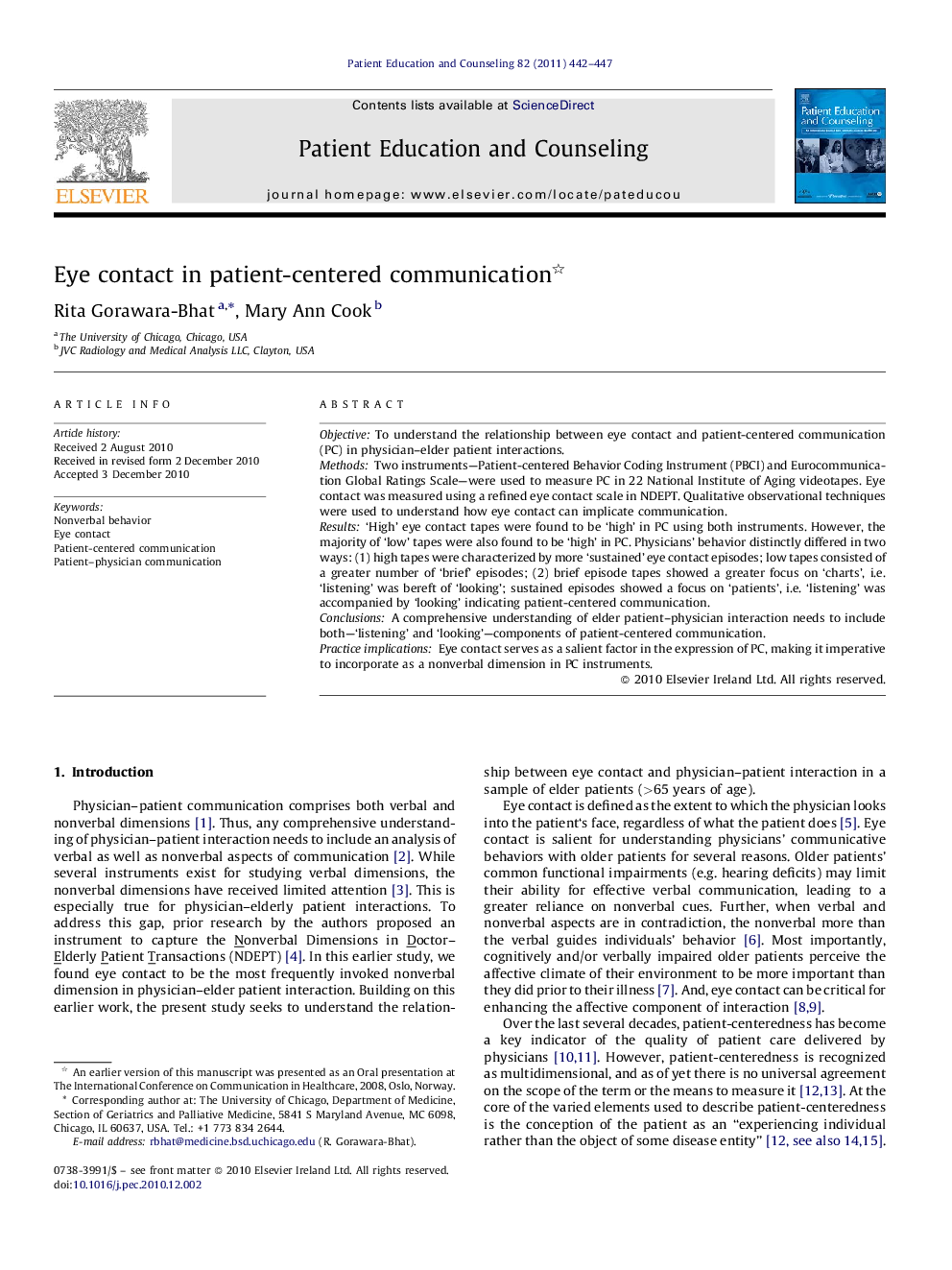| Article ID | Journal | Published Year | Pages | File Type |
|---|---|---|---|---|
| 3814564 | Patient Education and Counseling | 2011 | 6 Pages |
ObjectiveTo understand the relationship between eye contact and patient-centered communication (PC) in physician–elder patient interactions.MethodsTwo instruments—Patient-centered Behavior Coding Instrument (PBCI) and Eurocommunication Global Ratings Scale—were used to measure PC in 22 National Institute of Aging videotapes. Eye contact was measured using a refined eye contact scale in NDEPT. Qualitative observational techniques were used to understand how eye contact can implicate communication.Results‘High’ eye contact tapes were found to be ‘high’ in PC using both instruments. However, the majority of ‘low’ tapes were also found to be ‘high’ in PC. Physicians’ behavior distinctly differed in two ways: (1) high tapes were characterized by more ‘sustained’ eye contact episodes; low tapes consisted of a greater number of ‘brief’ episodes; (2) brief episode tapes showed a greater focus on ‘charts’, i.e. ‘listening’ was bereft of ‘looking’; sustained episodes showed a focus on ‘patients’, i.e. ‘listening’ was accompanied by ‘looking’ indicating patient-centered communication.ConclusionsA comprehensive understanding of elder patient–physician interaction needs to include both—‘listening’ and ‘looking’—components of patient-centered communication.Practice implicationsEye contact serves as a salient factor in the expression of PC, making it imperative to incorporate as a nonverbal dimension in PC instruments.
